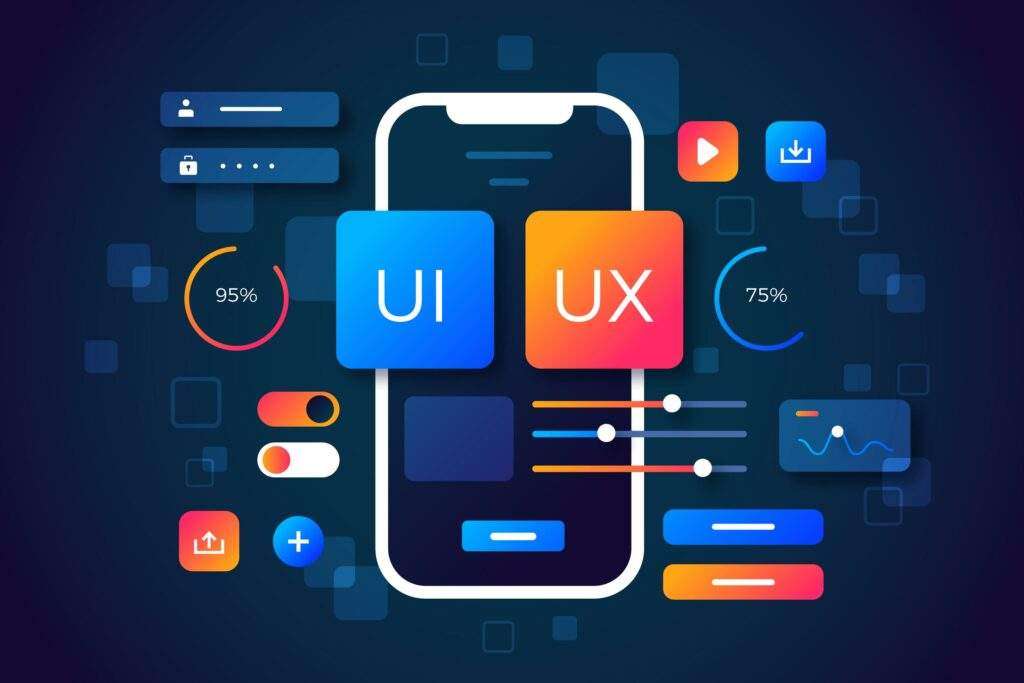
In the fast-paced realm of digital design, it is essential to stay abreast of the latest trends in order to craft exceptional user experiences. As technology progresses and user expectations soar, UI/UX designers hailing from renowned UI/UX design company constantly strive to push boundaries and discover fresh possibilities.
These visionary companies fully grasp the significance of integrating emerging trends into their design workflows, enabling them to provide state-of-the-art solutions that deeply resonate with users.
Top 7 Trends in UI/UX Design
1. Dark Mode Dominance:
Dark mode has emerged as a dominant trend in UI/UX design, offering a visually appealing and energy-efficient alternative to traditional light interfaces. Dark color schemes not only enhance readability but also reduce eye strain and improve battery life on OLED screens.
Many popular platforms and applications now provide users with the option to switch to a dark mode, and designers are incorporating it as an essential feature in their design systems.
2. Microinteractions:
Microinteractions refer to the subtle animations and feedback that occur when users interact with an interface. These small but impactful details enhance the overall user experience and make interactions feel more intuitive and engaging.
From a button changing color on hover to a progress indicator during file uploads, well-designed microinteractions create a sense of delight and add a human touch to digital interactions.
3. Voice User Interfaces (VUI):
With the rise of virtual assistants and smart speakers, voice user interfaces have gained significant traction. Voice commands and interactions provide a hands-free and convenient way for users to navigate through interfaces, especially in situations where manual input may be challenging or inconvenient.
Designing intuitive voice interfaces involves understanding natural language processing, speech recognition, and providing clear and concise voice prompts for users.
4. Neumorphism:
Neumorphism, also known as soft UI, is a design trend that aims to create interfaces that mimic the physical world by combining elements of skeuomorphism and flat design. It involves using subtle shadows and highlights to create a three-dimensional appearance, giving interfaces a tactile and realistic feel.
Neumorphism adds depth and visual interest to UI elements, making them more visually appealing and interactive.
5. Augmented Reality (AR) Experiences:
Augmented reality has made significant strides in recent years, offering designers new opportunities to create immersive and interactive experiences. AR overlays digital elements onto the real world, allowing users to interact with virtual objects in their physical environment.
From gaming and retail to education and healthcare, AR is revolutionizing various industries and pushing the boundaries of UI/UX design.
6. Data Visualization:
In an era of big data, effectively presenting complex information has become a critical aspect of UI/UX design. Data visualization techniques enable designers to transform vast amounts of data into easily understandable and visually appealing graphics, such as charts, graphs, and infographics.
Clear and concise data visualizations help users quickly grasp information and make informed decisions.
7. Accessibility and Inclusive Design:
Designing with accessibility in mind is no longer an afterthought but an integral part of the design process. Inclusive design aims to create experiences that can be accessed and enjoyed by all users, regardless of their abilities or limitations.
UI/UX designers are adopting inclusive practices, such as implementing proper color contrast, providing alternative text for images, and ensuring keyboard navigability, to ensure their designs are accessible to everyone.
Conclusion
In today’s rapidly evolving landscape of UI/UX design, it is vital for both designers and mobile app development companies to remain well-informed about the latest trends. By embracing these trends, UI/UX designers have the power to craft extraordinary user experiences that consistently meet the escalating expectations of users.
However, the role of mobile app development companies is equally critical in bringing these design trends to life. By collaborating with a reputable mobile app development company, businesses can tap into the wealth of knowledge and industry insights possessed by these professionals, enabling them to create mobile apps that not only engage users but also give them a competitive advantage in the market.


